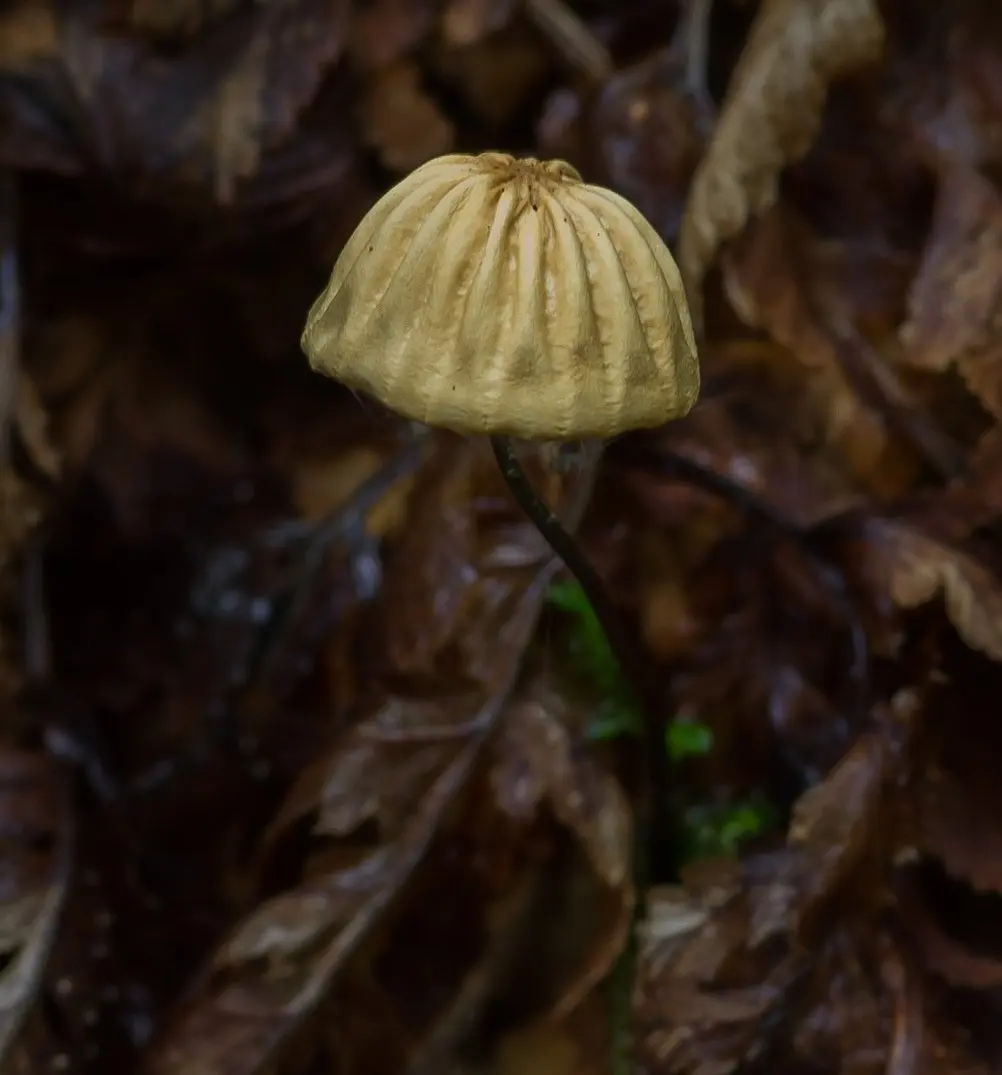Dry rot (Marasmius siccus)
- Division: Basidiomycota (Basidiomycetes)
- Subdivision: Agaricomycotina (Agaricomycetes)
- Class: Agaricomycetes (Agaricomycetes)
- Subclass: Agaricomycetidae (Agaricomycetes)
- Order: Agaricales (Agaric or Lamellar)
- Family: Marasmiaceae (Negniuchnikovye)
- Genus: Marasmius (Negnyuchnik)
- Type: Marasmius siccus (Dry rot)
:
- Dry chamaeceras

head: 5-25 mm, sometimes up to 30. Cushion-shaped or bell-shaped, almost prostrate with age. In the center of the cap there is a pronounced flat zone, sometimes even with a depression; sometimes there may be a small papillary tubercle. Matte, smooth, dry. Pronounced radial striation. Colour: bright orange-brown, red-brown, may fade with age. The central “flat” zone retains a brighter, darker color longer. 
plates: adherent with a tooth or almost free. Very rare, light, white to pale yellow or creamy.
Leg: quite long with such a small hat, from 2,5 to 6,5-7 centimeters. Thickness is about 1 millimeter (0,5-1,5 mm). Central, smooth (without bulges), straight or can be curved, rigid (“wire”), hollow. Smooth, shiny. Color from whitish, whitish-yellowish, light yellow in the upper part to brown, brown-black, almost black downwards. At the base of the leg, a white felt mycelium is visible.

Pulp: very thin.
Taste: mild or slightly bitter.
Smell: no special smell.
Chemical reactions:KOH on the cap surface is negative.
spore powder: White.
Microscopic Features: spores 15-23,5 x 2,5-5 microns; smooth; smooth; spindle-shaped, cylindrical, may be slightly curved; non-amyloid. Basidia 20-40 x 5-9 microns, club-shaped, four-spored.
Saprophyte on leaf litter and small deadwood in deciduous forests, sometimes on coniferous white pine litter. Usually grows in large groups.
Summer and autumn. Distributed in America, Asia, Europe, including Belarus, Our Country, Ukraine.
The mushroom has no nutritional value.
Similar-sized non-blighters quite simply differ from Marasmius siccus in the color of their caps:
Marasmius rotula and Marasmius capillaris are distinguished by their white caps.
Marasmius pulcherripes – pink hat
Marasmius fulvoferrugineus – rusty, rusty brown. This species is slightly larger and is still considered North American; there are no reliable data on finds in the countries of the former CIS.
Of course, if due to dry weather or due to age, the dry Negniuchnik began to fade, determining it “by eye” can cause some difficulties.
Photo: Alexander.









